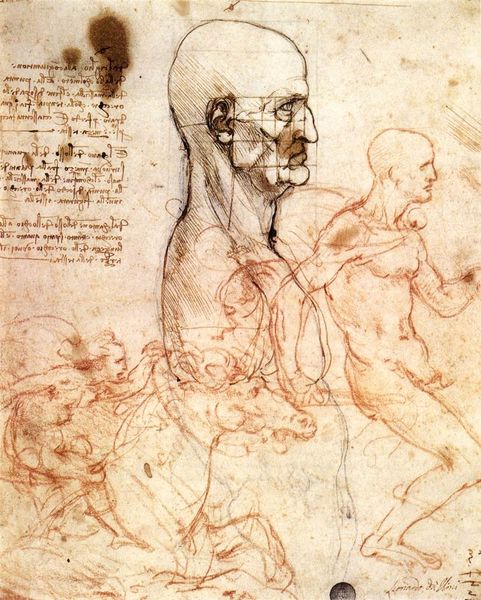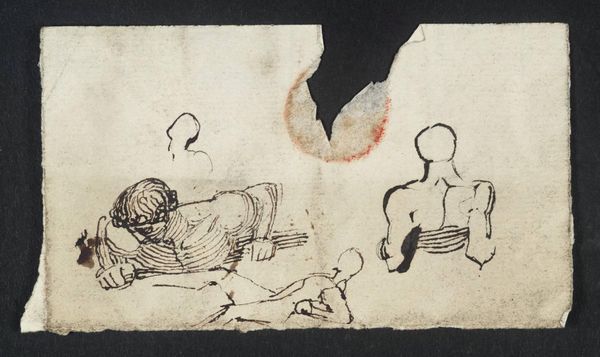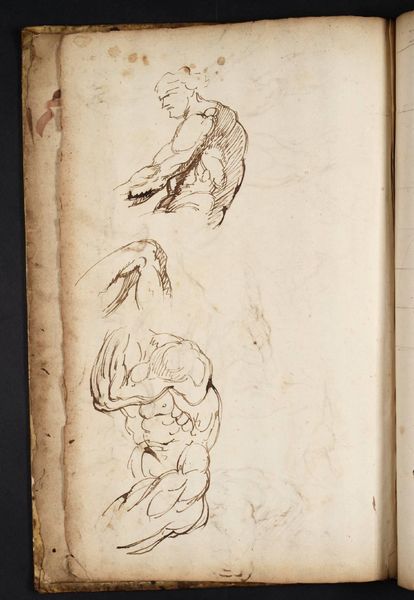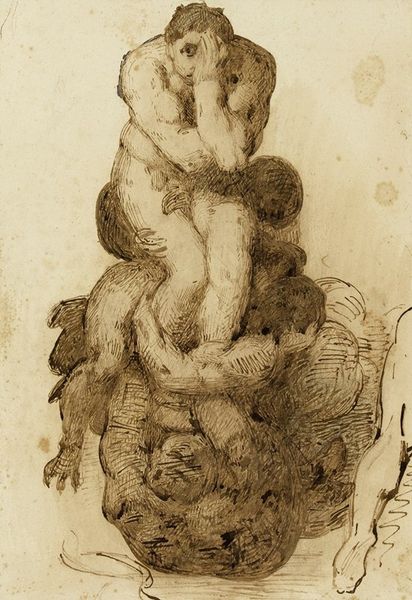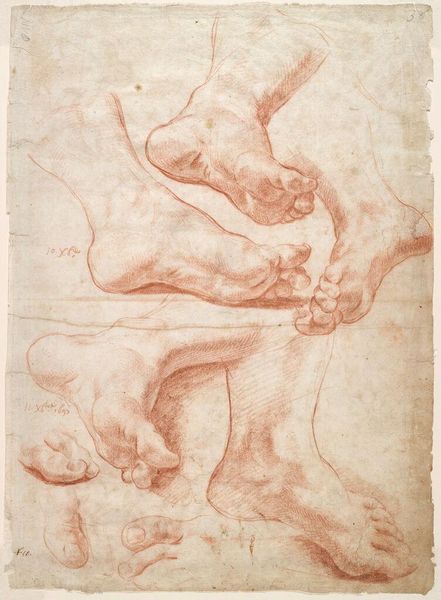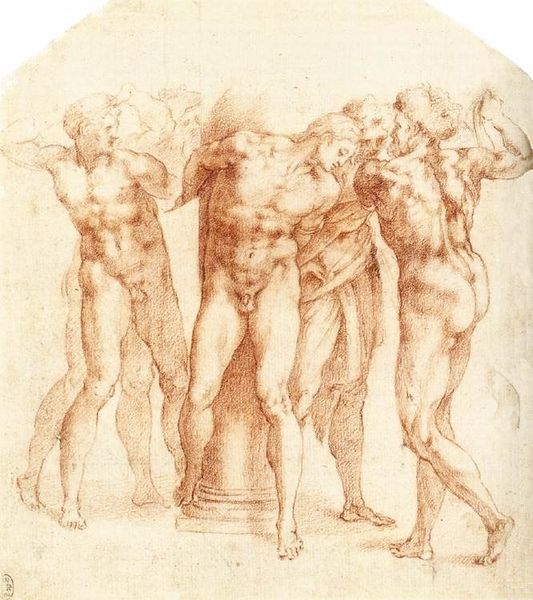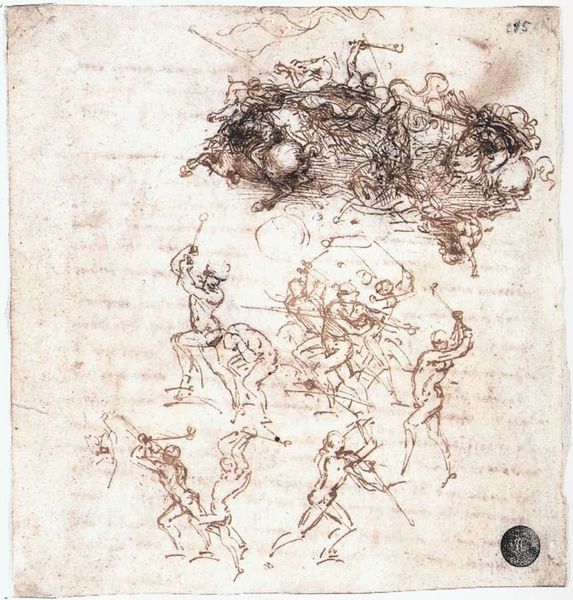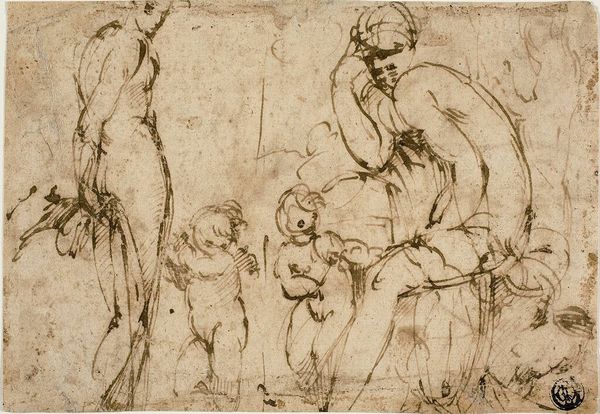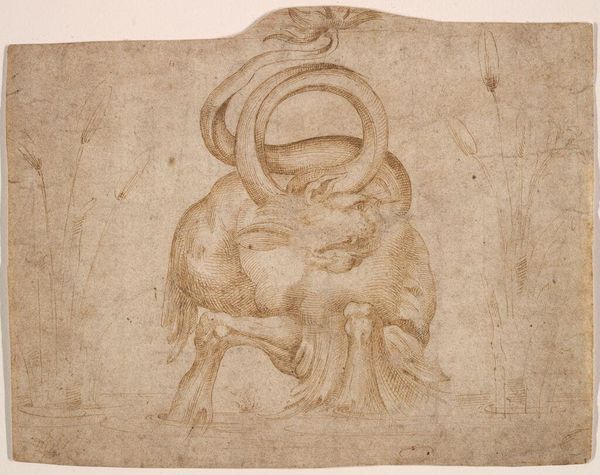
#
toned paper
#
pencil sketch
#
possibly oil pastel
#
coloured pencil
#
underpainting
#
detailed observational sketch
#
human
#
watercolour illustration
#
organism
#
pencil art
#
mixed media
#
watercolor
Copyright: Public domain
Editor: Leonardo da Vinci's "Views of a Foetus in the Womb," created around 1513, is quite striking. The anatomical detail, even now, feels incredibly intimate. What really grabs me is the starkness of the subject matter alongside the delicate medium - possibly watercolor and pencil? It's almost paradoxical. How do you interpret this work? Curator: I see it as a potent intersection of art, science, and the socio-political climate of the Renaissance. The very act of dissecting and illustrating the human body, especially a fetus, was pushing boundaries. This wasn’t simply a medical illustration; consider where this knowledge would be disseminated. Who was privy to such anatomical insights, and how did this power dynamic shape the understanding of life itself? Think of the debates around the soul, ensoulment, and the Church’s stance on the body. Editor: So, it's not just about the science, but who *gets* the science, and the implications of that knowledge? Curator: Precisely. Da Vinci's work here enters the arena of visual politics. The imagery subtly challenges existing doctrines by offering an unprecedentedly detailed view of human development. It's not just observation; it’s a form of advocacy, pushing the limits of what can be seen, known, and, consequently, questioned. Did you notice how these "scientific" sketches are presented almost like portraits, individual beings? Editor: I didn't quite see that until now – that they look like individual beings contributes a sense of humanity. Curator: Yes, it becomes less of an objective study and more of a quiet statement about personhood itself. This piece reveals a profound shift in how we understand, visualize, and discuss life and the human body. It shows me how artistic representation actively contributes to shaping and reshuffling social and cultural norms. Editor: It's fascinating how a single image can hold so many layers. I'll never look at Renaissance art the same way again! Curator: Exactly. Every artwork holds potential to unravel a myriad of historical contexts.
Comments
No comments
Be the first to comment and join the conversation on the ultimate creative platform.



